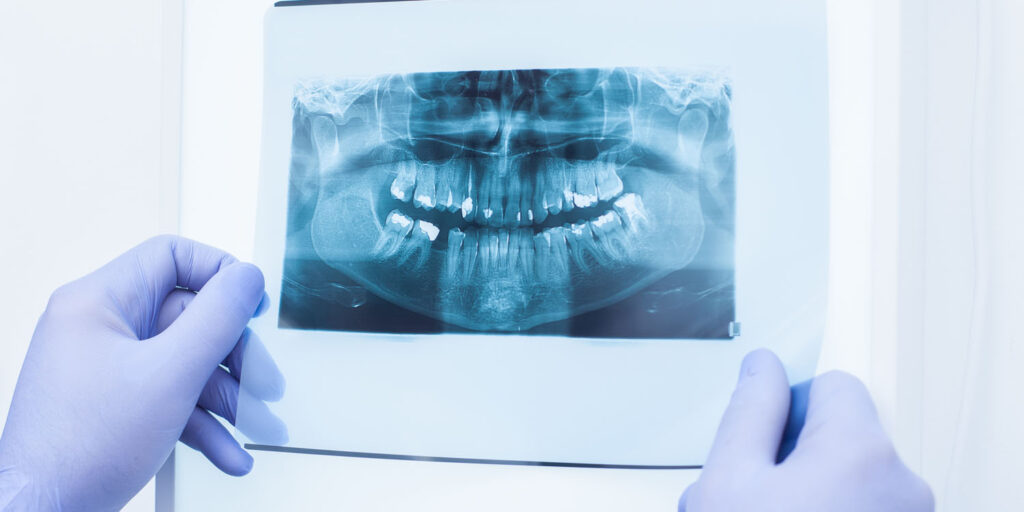Researchers in Brazil have created a machine-learning system that can determine a person's gender based on panoramic radiographs — wide-view dental X-ray images that capture the entire mouth. The system was 96% accurate when the image resolution was good and the individual was over 16 years of age. Validity was lower for younger individuals. Their results were published in Journal of Forensic Sciences.
When forensic experts need to identify an individual based on human remains, determining the gender of the deceased is one of the primary objectives. Throughout history, various methods have been used for this, many of which are based on the analysis of bones, their structure and relationships. Forensic methods that extract vital information from bones are especially important because bones are often the best-preserved part of the body.
Sometimes forensic experts only have jaws and teeth to work with. This is especially true in large-scale accidents or other situations where human remains are analyzed in various stages of decomposition, such as bodies that have been burned, buried, or skeletonized. These are situations where forensic dentistry techniques are of utmost importance.
Like many other areas of human endeavour, artificial intelligence (AI) is making inroads into this area as well. AI-powered methods can help dentists interpret images more efficiently, reduce human error, and make diagnoses faster. It is also possible that AI-based techniques can be used to capture information that is not easily detectable using the naked eye or classical methods.
Study author Ana Claudia Martins Sekonel and her colleagues wanted to explore whether an AI-powered device could be developed that could accurately predict a person's gender based on panoramic radiographs. Panoramic radiographs are wide-view dental X-ray images that capture the entire mouth, including the teeth, jaw, and surrounding structures in a single, comprehensive image.
These researchers collected 207,946 panoramic radiographs and related reports from 15 medical centers in São Paulo, Brazil. These panoramic radiographs were obtained using four different instruments. Fifty-eight percent of these came from female patients. All patients were alive at the time the radiograph was taken. Forty-three percent of them were missing up to four teeth. Five percent had more than sixteen teeth missing.
The study authors organized each patient's data into a database and trained two machine learning algorithms to predict gender based on panoramic radiographs. One algorithm was a convolutional neural network, while the other was a residual network. A convolutional neural network is a type of deep learning model that learns a classification of features in a set of input images. A residual network is a type of deep learning model that uses shortcuts to help move information through layers more efficiently.
The results showed that, after optimization, both types of algorithms had similar accuracy in predicting gender. The main factor affecting accuracy was the resolution of the images—the better it was, the higher the accuracy. Another important factor was age. For patients aged 20 to 50 years, the system's accuracy was over 97 percent. It was slightly less than 95 percent for patients older than 70 years.
For patients between the ages of 6 and 16, the system was 87 percent accurate in predicting their gender, while for children under six the accuracy was only 74 percent. For individuals over 16 years of age, the overall accuracy was 96%.
“This study demonstrates the effectiveness of an AI-powered tool for gender determination using PR. [panoramic radiographs] and emphasizes the role of image resolution, age and gender in determining algorithm performance,” the study authors concluded.
The study presents a new software tool for determining an individual's gender based on panoramic radiographs. However, it should be noted that all the images used in the study were of people who were alive. The effect may be different if the images come from human remains where decomposition has already progressed.
Dissertation, “Deep Learning for Gender Determination: Analyzing Over 200,000 Panoramic Radiographs,” Ana Claudia Martins Cicconele, Renan Lucio Berbal da Silva, Joon Ho Kim, Bruno Arago Rocha, Denis Goncalves dos Santos, Luis Gustavo Rocha, Luis Written by Goncalves dos Santos. Gallacio Gomes Ferreira, Vinícius Henrique Pereira dos Santos, Jefferson Orofino Costa, and Renato Vicente.
